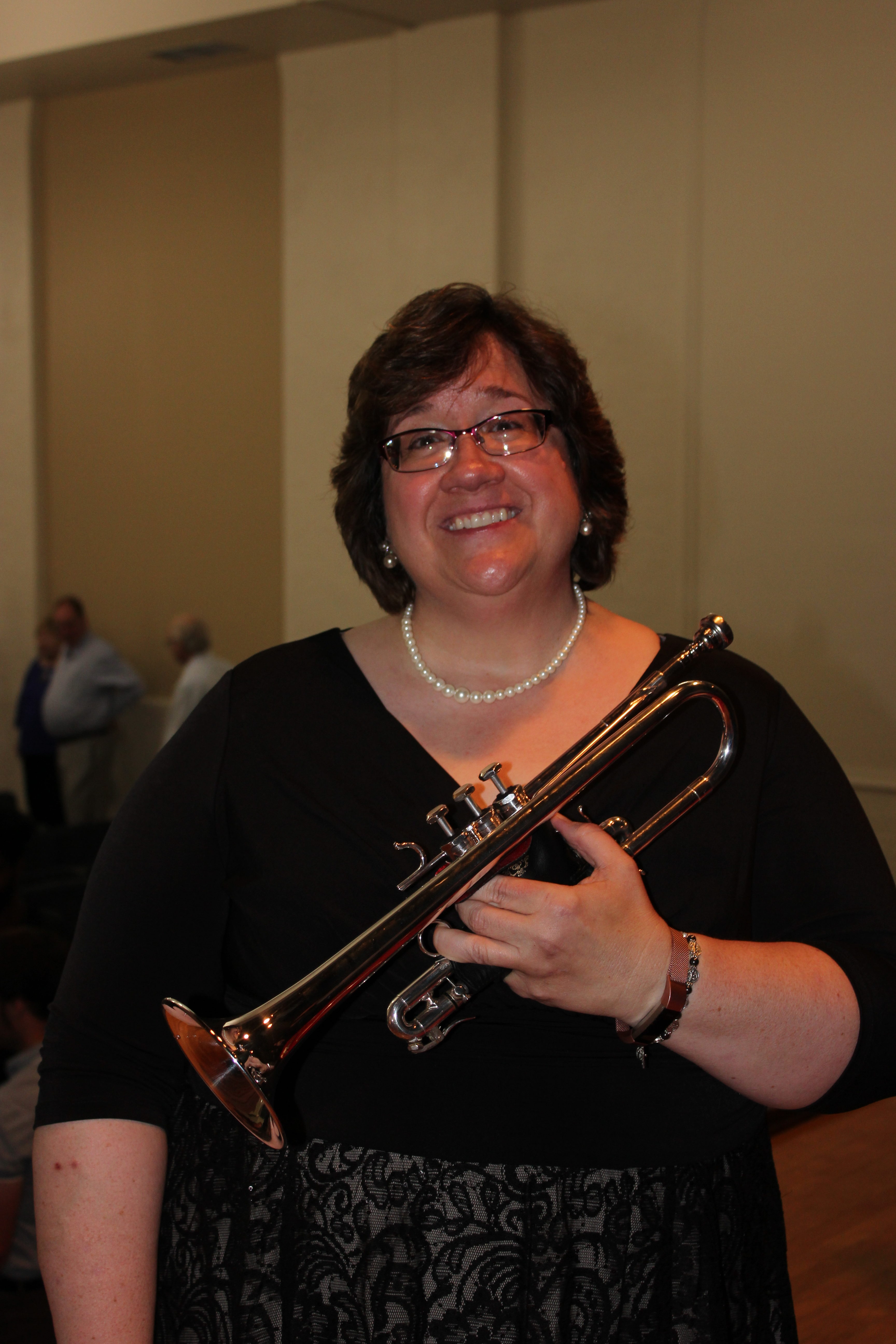Gabby Gardner/ The Johnsonian
You wouldn’t expect to see a crowd of students at common time listening to classical music. The performance gave audience members a show and some food for thought on how a single instrument was perceived in the classical music era and how it evolved.
The new chair of the Winthrop department of music, Elisa Koehler, showcased a musical performance called “Lunchtime Recital” at Barnes Recital Hall on Sept. 5 during common time. The event was open to students and members of the Rock Hill community during common time and was both entertaining and educating.meant to both entertain the audience and educate them on the importance of the trumpet as a musical instrument and how music was created around it.
“[One of the take-aways for the performances was] that the trumpet changed a lot throughout history and so did the music written for it,” said Koehler.
Koehler has previous experience with the Baltimore Chamber Orchestra, the Washington Cornett, as well as authored numerous books and articles on trumpet concertos. She applied to Winthrop University last fall and underwent a screening process through video interviews among fifty candidates.
“In December I was notified that I was a finalist and came to campus for two days in January for several in-person interviews. The search committee comprised of eight faculty members then made their recommendation to the Dean of the College of Visual and Performing Arts, who offered me the job in February,” said Koehler.
The performance was accompanied by fellow performer Rhoda Jeng on the piano, who previously played concertos with Koehler in Maryland before coming to Winthrop. A recurring theme was the different types of rhythms of piano arrangements from the peppy Allegro to the somber Largo and how the trumpet was able to complement the music.
“I loved how the trumpet participated in all styles of music (classical, jazz, Motown, Mariachi, and bands), especially in orchestral music and film scores. I love all kinds of music and enjoyed how the trumpet consistently played a leading role in all styles,” said Koehler.
Among the three performances, one of the highlights was the Concerto for Trumpet in E-Flat Major, Hob. Vll: 1 by Joseph Haydn, which incorporated half steps and fanfare of the trumpet in building up with the piano. The performances drew from concertos and operas that focused on the trumpet, which was a sense of inspiration for the performers as the piece was made to complement E-Flat key.
“My parents were both opera lovers, so I grew up hearing opera recordings around the house and it would grab my attention when trumpets were featured in the orchestra. Some of my major inspirations while growing up were Maurice Andre, Rafael Mendez, Wynton Marsalis, Håkan Hardenberger, and Kiri Te Kanawa (opera singer),” said Koehler.
In between the performances, Koehler addressed the audience by explaining the different keys of a trumpet and the history of the trumpet as an instrument. An interesting note of the event was how people in the 19th century associated trumpets to modern day police sirens.
“Audiences didn’t associate the trumpet with poetic music in different keys,” said Koehler.
Due to the time constraints of lunch and afternoon classes, both Koehler and Jeng chose three different pieces that focused on piano and trumpet while simultaneously fulfilling a cultural event credit requirement for students.
“[The hardest part of preparing for the show was] trying to select pieces that would fit within the 50-minute format of the common hour recital,” said Koehler.
With her first concert a well-attended event, Koehler is planning to support students in the department of music with new programs and opportunities to work with the staff.
“I’m working to expand the offerings in graduate programs and support the needs of students and faculty,” said Koehler.




